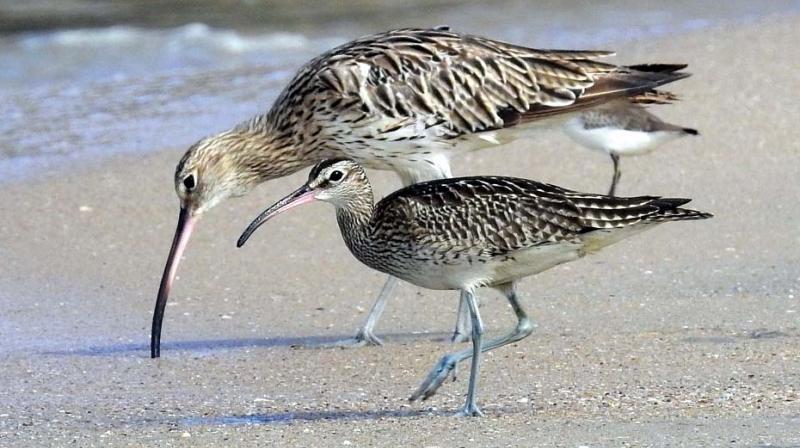Endangerd darters found in Kollam wetlands
The district also records higher number of birds, including 32 migratory species.

Kollam: The Asian Waterbird Census 2017 conducted in Kollam by WWF-India in association with the social forestry wing of Kerala forests and wildlife department on Tuesday spotted 55 Oriental Darters which are designated as endangered by the Intrnational Union for Conservation of Nature (IUCN) in the Polachira wetlands here. It has also found a higher number of birds and bird species in the district - 9,378 birds belonging to 65 species including 32 migratory species. In 2016, it was only 5,303 birds of 59 species. They surveyed areas like Polachira wetlands near Chathannoor, Karali Marshes, Chittumala Chira, Sakthikulangara and Neendakara harbours, Pallikkodi, Vellanathuruthu, and Kandachira, an extension of Ashtamudi Lake.
In Polachira, they spotted migratory birds including 197 Eurasian Coots, 70 Spot-billed Ducks, and 110 Garganey Ducks. They reported 260 Purple Swamphens, 560 Lesser Whistling Ducks, the resident species, nine Eurasian Spoonbills and 40 Pheasant-tailed Jacanas, apart from 55 ‘Oriental Darters’. The wetland is also home to 185 Eurasian Coots, 25 Spot-billed Ducks, 219 Purple Swamp Hens and 262 Lesser Whistling Ducks and 25 Oriental Darters. In the Karali Marshes and Chittumala Chira, there were ten Eurasian Spoonbills, 280 Garganey Ducks, and 205 Whiskered Terns and 193 Purple Swamphens and observed that the marshes were recovering its bird-richness ruined by unchecked sand mining.
The Sakthikulangara - Neendakara Harbor and Pallikkodi areas confirmed their avian abundance with the highest count with 1,442 Little Egrets, 169 Little Cormorants, 182 Intermediate Egrets, 214 Cattle Egrets, and 275 Brahmini Kites which are resident species and 78 Northern Pintails and 76 Whiskered Terns along with few other migratory ones. “Though there is a considerable hike, both in the number and species diversity of water birds in the district, most of the sites are facing habitat loss and degradation. Many regular birding areas are under severe threats like pollution, land reclamation, invasive species, lack of agriculture, and unscientific developmental activities,” A.K. Sivakumar, senior education officer with the WWF-India, who led the team, told DC.

